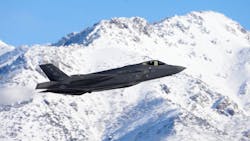Designers of future 6th-generation jet fighter consider artificial intelligence (AI), long-range sensors
WASHINGTON – Should the Air Force and Navy prioritize the engineering of an entirely new platform with paradigm-changing technologies for a 6th-generation jet fighter, or simply keep upgrading the state of the art 5th-generation aircraft in the near term? Kris Osborn at The National Interest reports. Continue reading original article
The Military & Aerospace Electronics take:
13 July 2020 -- These questions seem to be informing the current Navy-Air Force rationale, which is to look at new airframes as well as adaptations of the best of what’s available. The latter option brings its own advantages, because various industry developers are already building prototypes of 6th-Gen fighters with newly designed, stealthier airframes.
Looking at applications of artificial intelligence (AI), miniaturized long-range sensors, targeting technology and drones operating with improving autonomy lead some to contend that perhaps some of the most essential ingredients of some of the long-term transformational technologies are, in effect, already here to varying extents. This would be the basis upon which a nearer-term aircraft, drawing from some off-the-shelf-items, would be pursued.
There is widespread consensus that applications of AI appear to provide the framework for the most defining expected technological progress for the 6th-generation jet fighter. For instance, a 2017 paper from a sixteen-nation NATO conglomerate of analysts, called the Joint Air Power Competence Center, raises questions about when, and how, AI may outpace the human ability to keep up.
Related: 6th-generation jet fighters may involve hypersonic technology, artificial intelligence (AI)
John Keller, chief editor
Military & Aerospace Electronics

